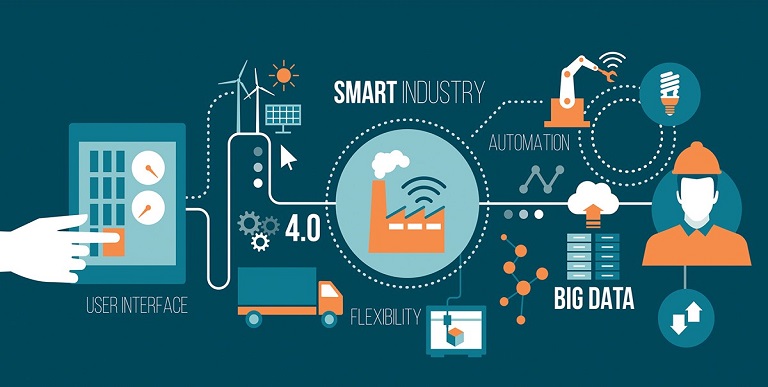The Industrial Internet of Things, also abbreviated as IIoT, has surprisingly surpassed its potential to streamline processes and costs in warehouses and manufacturing facilities. From automation to data-driven insights, IIoT has brought a transformation never thought of before. The way industries now operate, communicate, and utilize data through this technology is indeed unbelievable.
IIoT has opened a whole new world of opportunities for facility owners and high productivity levels of the workforce, and its dominance is expected to grow more. In fact, the global IoT market is expected to reach a value of USD 1,386.06 billion by 2026 from USD 761.4 billion in 2020 at a CAGR of 10.53% during the forecast period (2021-2026)*.
For businesses, this brings advantages like:
- Greater Productivity. With IIoT come the opportunities for manufacturers to automate their operations. Robotics and automated machinery work more efficiently and accurately, thereby optimizing all activities.
- Reduced Costs. Proactive asset management, inventory management, strict quality control, supply chain management, product packaging optimization offered by IIoT are some amazing ways to save costs and get a good return.
- Improved Safety. Smart IIoT technology has given way to ‘smart’ security as all IIoT sensors and devices work together to monitor workplace hazards and employee safety. Everyone in the facility is alerted way before an accident is about to happen, and desired measures are taken to prevent such instances, now and later.
- Better Energy Efficiency. Processing and manufacturing industries are responsible for eating up a major proportion of energy produced worldwide. So, by deploying IIoT technology, it becomes easier for the managers to identify devices that consume the most energy and other abnormalities and address them immediately.
- Lesser Machine Downtime. Facility operations are negatively impacted by machine downtime. The manufacturers cannot operate, and its cost per hour adds up to more loss. It is only with predictive maintenance that all this can be handled. IIoT allows constant monitoring of equipment performance and raising a warning before any breakdown happens.

IIoT Uses and Practical Applications
1. Automated and Remote Monitoring
IIoT allows a centralized system to control and monitor all your facility processes. This means that you can look over several plants at different geographic locations and production status in real-time. You can also view the log files on the Programmable Logic Controllers (PLCs) and reset the machine if required.
2. Facility Management
A lot of machines and tools in the facility are designed to perform within certain temperature and vibration ranges. Any major fluctuations in them are detected immediately by IoT sensors and warned for. Hence, you are able to ensure the right environment for your machinery at all times.
3. Inventory Control
IIoT solutions allow monitoring of supply chains from start to finish. That helps to track the inventory and trace it wherever it is on the premises. Any significant deviations are quickly caught, and realistic estimation is done regarding available stock, work-in-progress materials, and to-be-arrived new items.
4. Supply Chain Optimization
With the ability to have real-time information of goods and complete control over logistics, you are able to pinpoint the issues that are hindering processes or impacting the efficiency of your supply chain and make the right moves instantly to keep things profitable.
5. Analysis of Robot Actions
Most industrial activities are repetitive, so using robots for the purpose makes the work easy and quick. But, when it comes to assessing the robots, your IIoT platform comes into the picture. You get remote access to change robot programs and look into log files.
You can even access the live stream and check upon the working of certain robots, thereby making improvements as required.
Also Read: What Is Chatbot?

